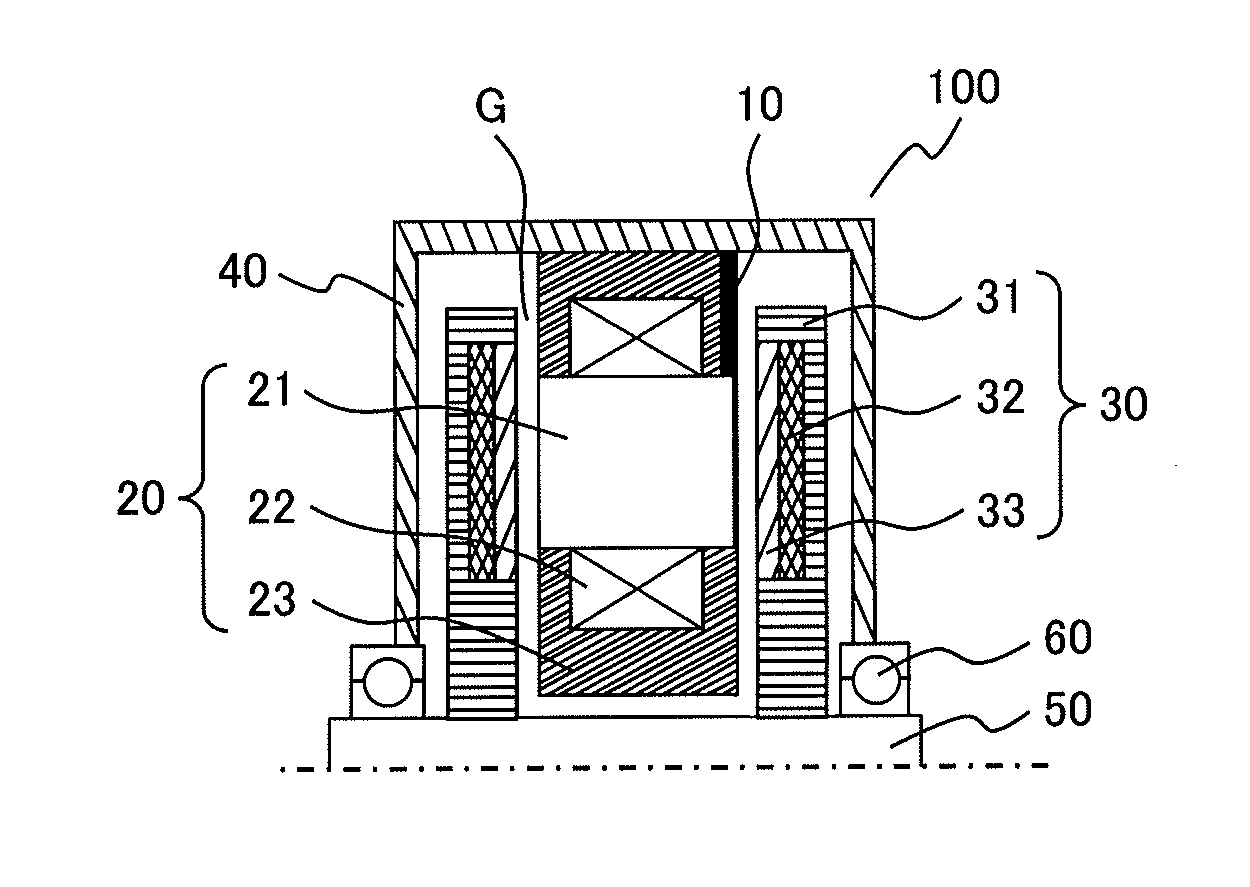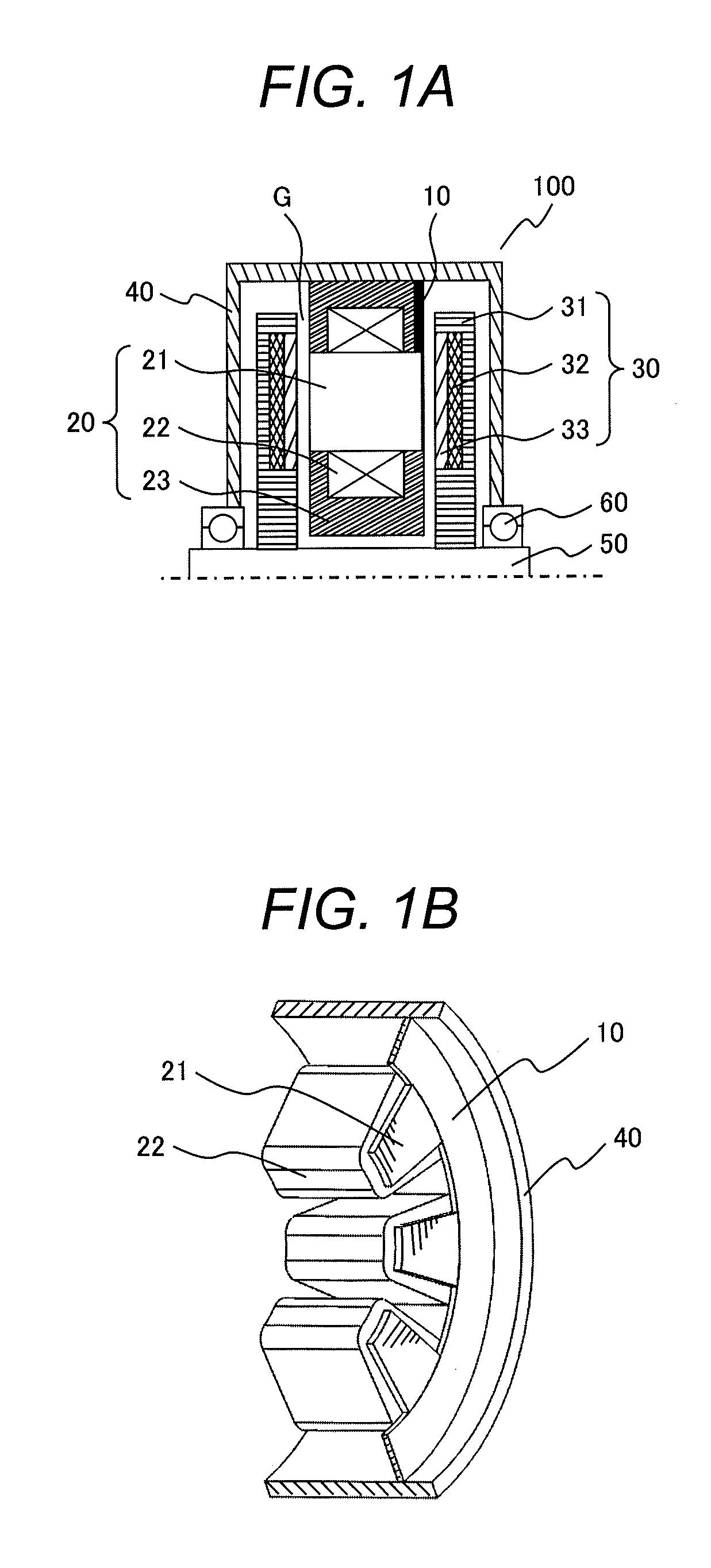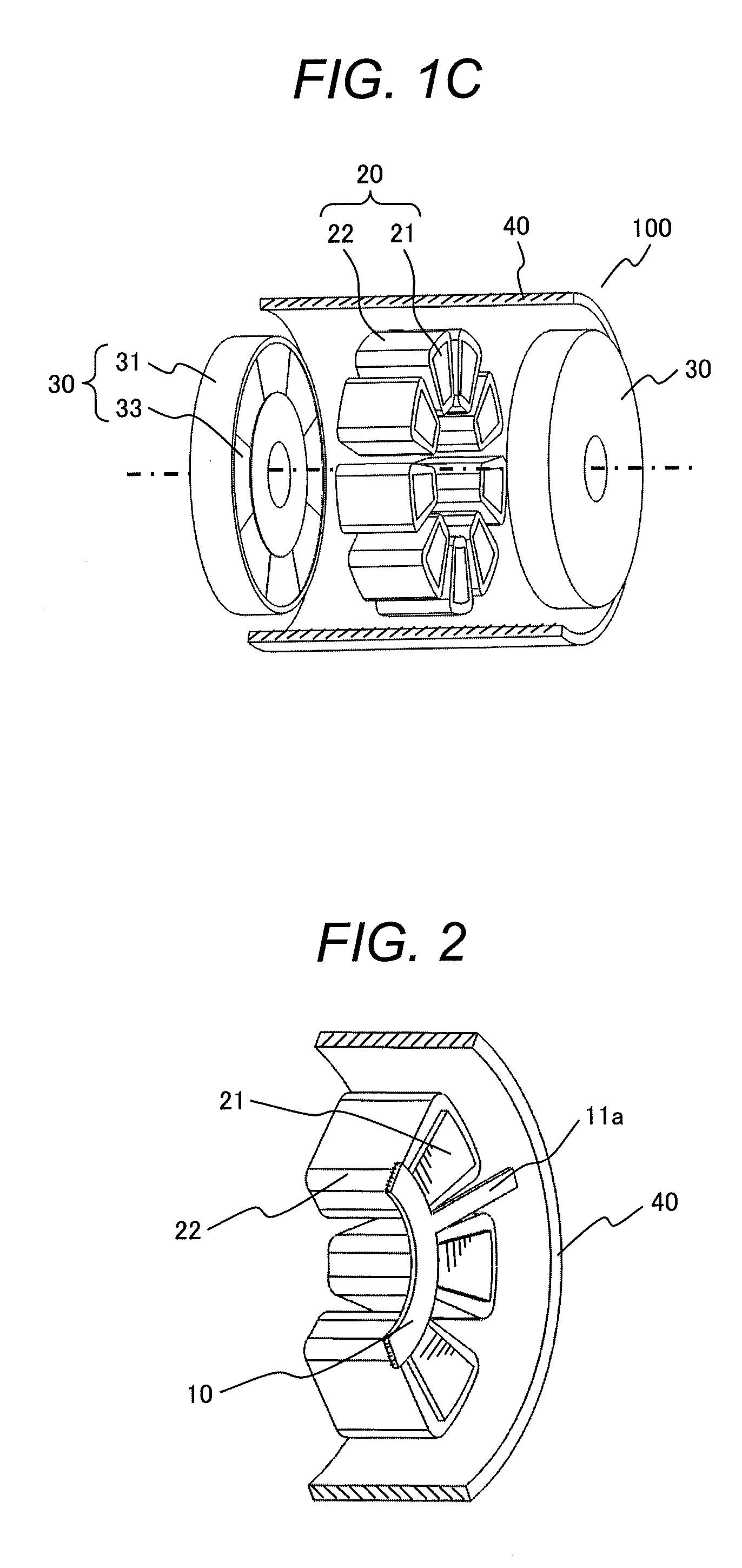Axial Gap Rotating-Electric Machine
a technology of rotating electric machines and axial gaps, which is applied in the direction of dynamo-electric components, synchronous machines with stationary armatures and rotating magnets, cooling/ventilation arrangements, etc., and can solve problems such as electric corrosion of bearings
- Summary
- Abstract
- Description
- Claims
- Application Information
AI Technical Summary
Benefits of technology
Problems solved by technology
Method used
Image
Examples
example 1
[0038]FIG. 1A is a cross-sectional view illustrating an example of the two-rotor one-stator axial gap motor as Example 1. FIG. 13 is a perspective view of the stator 20 of FIG. 1A. In FIG. 1B, illustration of the mold resin 23 is omitted.
[0039]In Example 1, the stator is configured so that the stator cores 21 partly protrude in the axial direction (the direction of the axis of rotation of the motor) from the coils 22. A ring-shaped non-magnetic or paramagnetic conductive member 10 is arranged between the outer peripheral surfaces of the protruding portions of the stator cores 21 and the inner peripheral surface of the housing 40. For example, aluminum alloy is used as a non-magnetic conductive member. Although a magnetic material may be used as the conductive member, a non-magnetic conductive member is preferably used for allowing the magnetic field to pass effectively through the stator cores.
[0040]The inner peripheral surface of the link-shaped conductive member 10 comes into cont...
example 2
[0045]FIG. 2 is a drawing illustrating a structure of a stator of the two-rotor one-stator axial gap motor as Example 2. The same portions as Example 1 are denoted by the same reference numerals, and the description thereof is omitted.
[0046]In Example 2, the ring-shaped non-magnetic conductive member 10 is arranged on the inner peripheral sides of the stator cores 21. The outer peripheral surface of the link-shaped conductive member 10 comes into contact with the inner peripheral surfaces of all of the protruding portions of a plurality of the stator cores 21 arranged in the circumferential direction. Furthermore, at least one projecting portion 11a extending in the radial direction is provided on the outer peripheral surface (the outer peripheral side) of the ring-shaped conductive member 10 and a distal end of the projecting portion 11a comes into contact with the inner peripheral surface of the housing 40. In other words, the plurality of the stator cores 21 come into contact wit...
example 3
[0052]FIG. 3 is a drawing illustrating a structure of a stator of the two-rotor one-stator axial gap motor as Example 3. The same portions as Example 1 are denoted by the same reference numerals, and the description thereof is omitted.
[0053]In Example 3, a plurality of the projecting portions 11b are provided on the inner peripheral side of the conductive member of Example 1. The respective projecting portions 11b come into contact with the side surface of the protruding portions of the stator cores 21 between the protruding portions of the stator cores 21.
[0054]In Example 3 as well, the same effect as Example 1 is obtained. In particular, in Example 3, a plurality of the stator cores 21 come into contact with the conductive member 10 (the projecting portions 11b) also on the side surfaces of the protruding portions in addition to the outer peripheral surfaces of the protruding portions, and hence the contact properties between the stator cores 21 and the conductive member 10 may be...
PUM
 Login to View More
Login to View More Abstract
Description
Claims
Application Information
 Login to View More
Login to View More - R&D
- Intellectual Property
- Life Sciences
- Materials
- Tech Scout
- Unparalleled Data Quality
- Higher Quality Content
- 60% Fewer Hallucinations
Browse by: Latest US Patents, China's latest patents, Technical Efficacy Thesaurus, Application Domain, Technology Topic, Popular Technical Reports.
© 2025 PatSnap. All rights reserved.Legal|Privacy policy|Modern Slavery Act Transparency Statement|Sitemap|About US| Contact US: help@patsnap.com



